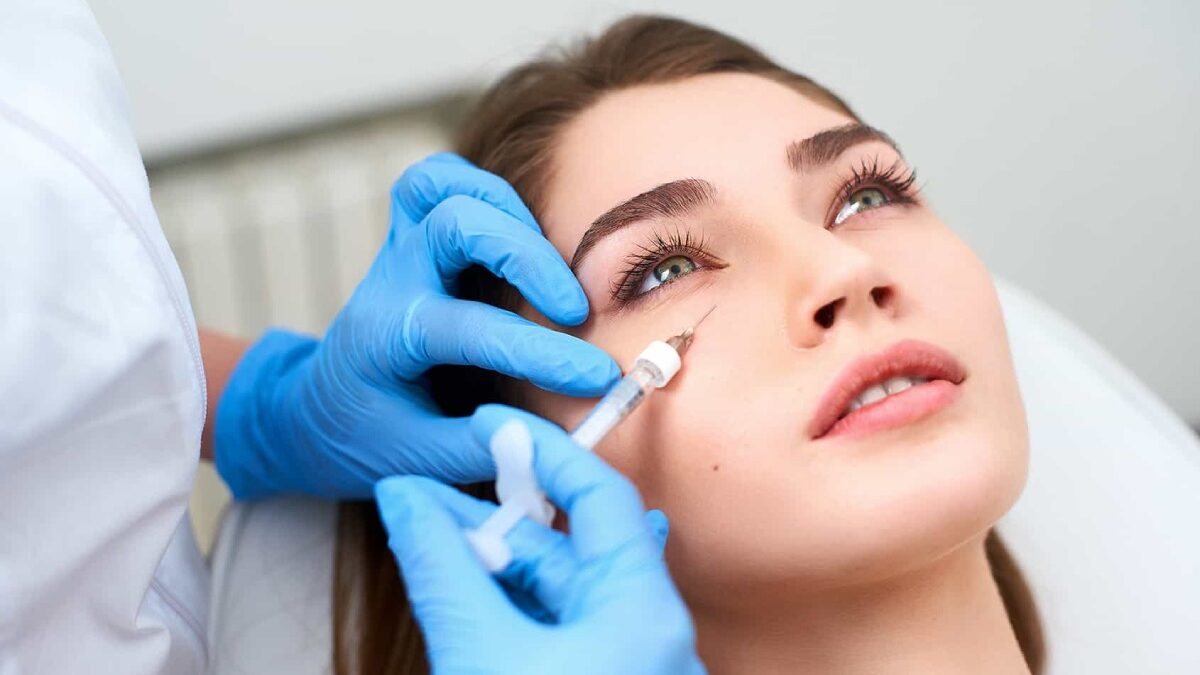Botulinum toxin, commonly marketed as Botox, is a drug derived from the soil bacteria Clostridium Botulinum type A. It is carefully manufactured in laboratory conditions and sold in vials of 100 units. Patients are, however, customarily administered small doses of 20-25 units that are diluted with normal saline. Botox was initially used in the medical field to treat strabismus and blepharospasm. However, nowadays, its use for cosmetic purposes has become widely popular. The product is FDA approved and is administered as an anti-aging agent to remove wrinkle lines around the mouth, between the brows, and in the neck region. If you feel that your facial skin has become loose and lax, then it is a cue to ring up the Glasgow Botox Specialist. Botox treatments have become very common, and middle-aged men and women undergo it to counter the inevitable (and undesirable) effects of aging.
Table of Contents
Sites for Botox Injections
1. Forehead
Horizontal lines along the forehead are the most common sites for Botox injections. Patients are injected 20-25 units at small intervals along the pleats to relax the underlying frontalis muscle.
2. Crow’s Feet
Small, tiny wrinkles at the edges of the eye (that usually form when one is smiling) are called Crow’s feet. They become more prominent with age but can be easily removed with botox injections of 5-15 units on each side.
3. Between Eyebrows
Glabella, or the area between the eyebrows, develops thin lines that can often give the impression of a sullen look. You can get this area smoothed out by a 10-25u botox injection.
4. Chin
The Mentalis muscle in the chin has been known to have enhanced motor activity in later years of life. Coupled with the loss of collagen, it inevitably causes the chin to have a puckered appearance. 2-6 units of botox is just the solution you need.
5. Botox Lip Lift
One of the most techniques, botox lip lift, is usually combined with lip fillers in an attempt to give the lips a fuller look. It also removes any unneeded creases around the mouth. The standard procedure involves the use of 10 units.
Understanding the Botox Procedure
Before signing up for a Botox treatment, you must have a complete understanding of the whole procedure. So, let’s get right in.
The human body uses chemical molecules called neurotransmitters to mediate muscular movements. Likewise, for facial muscles, the neurotransmitter responsible for transmitting electrical impulses to the motor neuron is acetylcholine. The recurrent contraction of these muscles, over time, results in the formation of frown lines, wrinkles, and creases. Botox treatment works to eliminate these wrinkles by injecting a drug that inhibits the function of acetylcholine. As a result, the muscle becomes relaxed, and motor activity is significantly reduced.
Now that the scientific working of botox is out of the way, we’ll narrow down the main procedure. The drug is injected into the specific muscle through a microneedle, and around one to three injections are needed per muscle. The minute nature of the needle assures little to no pain, and patients leave highly satisfied. The follow-up period is around six months.

